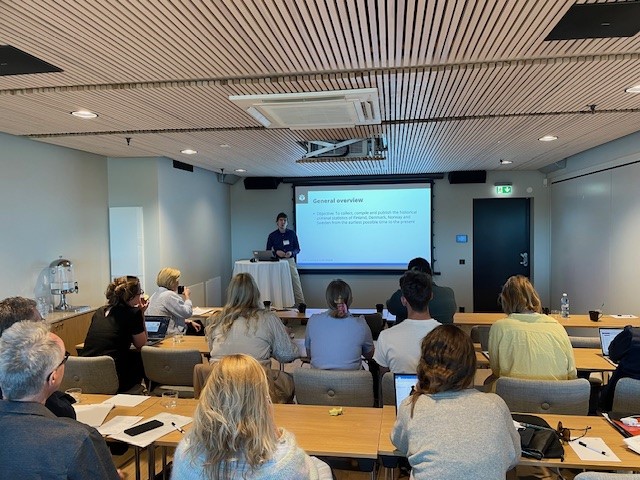At the NSfK research seminar in Skåne, historical criminologist Miikka Vuorela (FI) unveiled a unique web-based statistical database with Nordic crime data going back more than 200 years.
‘The Historical Criminal Statistics of the Nordic Countries 1810– 2022’ is a data collection project that is in its current final phase and funded by the Nordic Research Council for Criminology.
The project has collected macro-level criminal justice statistics from Denmark, Finland, Norway and Sweden and includes statistics on criminal convictions, police-reported offences, sentenced punishments and prison population with well over a thousand individual time series. The earliest statistics begin in the year 1810 (prison population).
It is a web-based statistical database where anyone can freely access the data and employ it in their criminological and historical research.
The project is the idea of, and has been executed by the Finnish researcher and university lecturer Miikka Vuorela.

A project more than 10 years in the making
How long have you spent and how did you go about collecting the information?
‘I began collecting the data in 2013 for my master’s thesis, tells Miikka Vuorela. I first collected the Finnish criminal statistics for the period of 1842-1890 with no intention of adding more. I spent my summer in the National archive of Finland going through old reports by the procurator of Finland given to the Emperor of Russia. I had a lot of problems at first as I have no formal training in history. I had to learn to read old handwriting and old Swedish. When I was done with Finland, I realised that no one had done the same in Denmark, Norway or Sweden.’
‘Of course, I knew the work of Hanns von Hofer, Nils Christie, and others but even they had not collected everything. I then decided that I would collect everything I could find in all four Nordic countries. I even attempted Iceland, but the language barrier prohibited me. I think I had collected all major datasets by 2018. Then I still had to put everything together. I compared crime definitions in criminal codes ranging from the 17th century to the present to compile the rather ragged raw data into the long time series you can now access. I always seemed to find some problem to fix or some idea to improve the final product. In the end I just had to accept that they would never be perfect, and it was time to let go.’
Still bound to the choices made by our ancestors hundreds of years ago
What historical development have you found most surprising and why?
‘A good question which is hard to answer! There are over a thousand time series in the data, and I think almost all of them have interesting and surprising details and developments. However, I would highlight the effects of the early criminal codes. Denmark and Norway shared the same criminal code since the 1600s (Danish Law 1683 / Christian Vs Norwegian Law of 1687) as did Finland and Sweden since the 1700s (Swedish Civil Code of 1734).’
‘While the codifications were similar in many ways, there were some important differences. These differences echo throughout the data in all kinds of aspects and their legacy is still clearly visible in the criminal justice systems of the 21st century. I find it fascinating how we are in some manner still bound to the choices made by our ancestors hundreds of years ago. I certainly had never thought about it but it became crystal clear when going through the data.’
‘One example would be the systemic decision between using more and shorter prison sentences (Denmark, Norway) versus using less but longer prison sentences (Finland, Sweden). This ongoing practice was already evident in the earliest criminal statistics and was caused by the Danish Law employing short-term bread-and-water imprisonment much more than the Swedish Code.’
Look at the numbers!
What specific research questions do you envision that this data will lead to?
‘The data project has been an important part of my life my whole adulthood. It is very dear to me. Thus, I hope many people will find all kinds of uses of for it. I am often awed by the ingenuity of some of the research settings my fellow criminologists conjure up. It would be truly amazing to see my data used for one of those inspiring projects.’
‘My wish is for someone to get a brilliant idea when looking at the numbers. It would make me happy. So for all of you reading this: Go ahead and surprise me!’
Access the database
You may access the The Historical Criminal Statistics of the Nordic Countries database here: Historical Criminal Statistics

